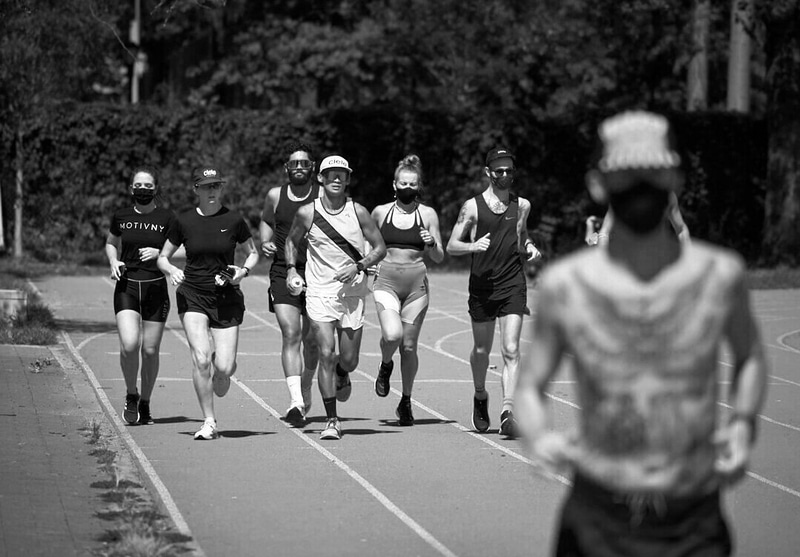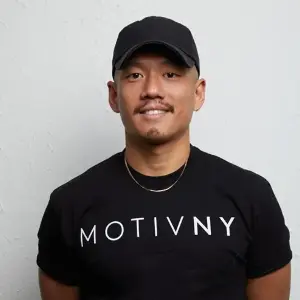Q&A WITH FRANCISCO BALAGTAS AFTER TSP DIY
September 8, 2020
MOTIVNY athlete and NYC Running Coach Francisco Balagtas embarked on a bold challenge called The Speed Project DIY. He set out to complete as many miles as possible in the span of 31 hours and 15 minutes and tallied 131.71 miles! As one of the few solo competitors from NYC, we checked in for a little recap.

Congratulations on the big finish this weekend! Let’s start with how you’re feeling.
The day after the race was a tiring day. I think I'm still too tired to really soak in the gravity of this win. There is so much to unload and unpack from the 31 hours and 15 minutes. I only get to see the race from my eyes and my perspective. I really want to hear everyone else's perspective who supported and crewed and those who watched from afar.
Please tell us why in the world did you sign up for TSP DIY all by yourself?
I think it came from a need to justify, but also test myself, after all the challenges I was undertaking since March. After completing the May Calendar Challenge, Seltzer Boys 1000 Mile Challenge, and continuing to run at least a Marathon distance every week, I kept thinking to myself, "When am I going to be able to measure how much I've gained from doing all of this?"
Can you walk us through some of the toughest points of the race? At what point were you about to quit?
One of toughest points came after Lap 3, mile 53. This was the farthest I've ever run in a continuous effort in my entire life. At this point I've peaked in my distance running, and I figuratively had 80 or some miles left to cover. At this point I was in new territory and anything my body and mind felt would be completely new. I had no choice but trust that I was ready for anything that came my way.
The laps through the night were difficult. At 3:00AM, after returning from a Lap, I forcefully said I needed to lay down to try to sleep for 45 minutes. I could feel my body refusing to lift my feet and legs as high as wanted, even if it was only a few inches. I knew I had to recharge now or I could lose this whole thing from getting hurt. But at the same time I did not know how the leaderboard was playing out. I was also thinking about how my nearest rival in Germany was already running in the daytime and if I wasn't moving I would be losing ground on him. I didn't want to wake up and then see he had gotten ahead of me. In the end I had to take care of myself and rest and it was the right choice to do.
And I'll only say this once. At no point did I ever want to quit. The only way I was going to stop was if I had gotten hurt. I told my Team Principal days before the race, that a decision to push would be made no matter what shape I was in if we were contending for the win.
Something must’ve kept you motivated. Care to elaborate?
People kept me motivated. Everyone who came out to support the runs kept me in it. Even though I didn't show much emotion during it, inside I was beaming that people were here for me and cared enough to volunteer their time to help me with this. The NYC running community is something special and I found that out first hand this past weekend. Every leaderboard update when I saw I was in the lead kept charging me up. That also kept my spirit up knowing I couldn't back off. That was my time to really show my strength and when I started to pull away from my nearest competitor and open up a gap I knew I had made it to an entirely different level.
OK, how do you even prepare for a race like this? What did you prioritize going into a race of this distance? Tell us how you integrated cross-training into your routine.
On the physical side I maintained at least 60-70 miles per week running, but easily getting into stretches of 80-110 miles per week when longer runs came into play. It has been considerably difficult for me to supplement strength training. I'm not savvy when it comes to strength training at home. The motivation isn't there for me. My most minimum amount of maintaining my strength and flexibility came from a pull-up bar and resistance bands.
The most notable thing that improved my fitness overall was my ability to cross train on the bike. I took up cycling more seriously, bought a road bike, and started riding centuries right away. I used cycling as a way strengthening my legs during climbs as well as mental sharpness for long 7-8 hour stretches. You have to be awake and aware on a bike at all times. You can't stare off like you would on a run or you would crash. The long hours on the bike made running long hours much more tolerable.
When I ride, it is never loaded in mind that I am doing this for "training". Right now my cycling is strictly geared around being exploratory and an outlet for me to discover the area around NYC farther than my feet could ever take me. The strenuous undertaking of riding over 100 miles is an added bonus to my fitness, but you still won't find me doing workouts on the bike.
Looked like you had some support from a variety of brands. What kind of role do your sponsors play in a successful race of this magnitude?
For me personally, it's understandable that it is a tough time getting support in a monetary sense from sponsors. Budgets are cut, non-essential spending is halted, and creative pushes around races and events are non-existent because there are no races or events to begin with. But with something like this at this time, I continue to maintain and push with brands that have supported me in the past and try to still support despite the situation we are all experiencing. I think it was important for me to carry on my relationships with brands like Ciele, Oakley, who have supported me for many years, while growing new relationships in basic forms with brands like Tracksmith, Strava, and On Running.
The roles these brands play in terms of product is essential to keep me comfortable throughout the entire process. But above all else, a brand getting involved in one form or another says that "they believe in you". And sometimes that is a huge driver in performing well.
How do you prioritize your recovery after a race like this and through the training process?
During training, I listen to my body, waiting for it to tell me when I need to come to MOTIVNY for manual therapy and other help. The work I do with David involves clear communication about what I'm feeling. During peak training, I get on the table at least once a week to make sure I continue to ride or run at large volumes without any discomfort.
Recovery after a race like this involves a few days of limited movement, but the best cure is actually moving enough to keep your body warm as it powers down and begins to repair all the damage you inflicted on yourself.
So what’s next? Do you have your sights set on another race/goal/challenge?
I think I'll be taking the rest of the year off when it comes to racing unless something locally really catches my eye and interest. I plan on getting back to doing more trail running again in a few weeks to change up the landscape, but also start riding more frequently again.
As always, @ProjectNoDaysOff has to continue to finish out Year 4.
Photo credit: David Paz
As always, keep an eye out on the blog for more features of some of our talented athletes and the best places to run and work out in NYC.
